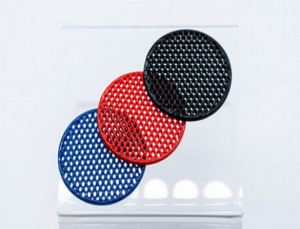
vipro-HEAD series from ViscoTec makes material adjustments unnecessary
In industrial manufacturing, especially in the automotive and electronics sectors, new materials and processes are constantly being used. 3D printing is increasingly replacing established manufacturing methods. These changing conditions place new demands on the planning of processes and the design of components and manufacturing equipment.
In cases like these, the classic procedure before full scale production of a component looks something like this:
- Validation of the adhesives or the materials to be processed, such as thermal pastes, silicones, damping pastes, solder pastes, etc.: The first step is an analysis of the specifications, in which the manufacturing conditions and the complete product life cycle must be included. Central to this phase is the definition of parameters for the selection of a suitable adhesive. The adhesive application and bonded joint are validated through testing.
- Definition of the type of application: Based on the results of the test, the validated adhesive is adapted to the customer-specific application. On this basis, the decision is then made as to which application type and mixing technique will be used.
- Problems arise when the pre-qualified material cannot be applied in the fully automated process in the way originally planned by the technical experts, when developing the component or defining the application. As a result, the adhesive has to be applied manually to prototypes. This can be implemented for complex component geometries and an exceedingly long cycle time. In the context of full automation, however, other parameters such as downtimes etc. often play a role that cannot be taken into account in advance.
In summary, the process is extremely time-consuming. Validating a new adhesive for the automotive sector can easily take up to 36 months.
New manufacturing methods such as 3D printing often have the disadvantage that pre-qualified materials cannot be processed. Only similar or “replica” material can be printed. Even if the manufacturers of the materials say that the properties of the new material are exactly the same as those of the original material, this is not possible. The fact is: Laws of physics and chemistry always apply and leave no margin. Anyone who does not observe this will be in for a nasty surprise.
For this reason, ViscoTec placed particular emphasis on the ability to process standard materials when developing the vipro-HEAD series. If a component is to be printed from silicone, then the original silicone also used in the injection molding can be processed for this purpose. A change in the production method, for example in the case of a pre- or post-series, does not subsequently require any adjustment of the material.
In 3D printing in particular, the use of original materials is a huge leap forward in development. There is no need to purchase and qualify specially developed and expensive filaments, as the existing original material is used. There are no additional costs. There is no risk that the materials will behave in any way other than the original material, which has been qualified at great expense.


















